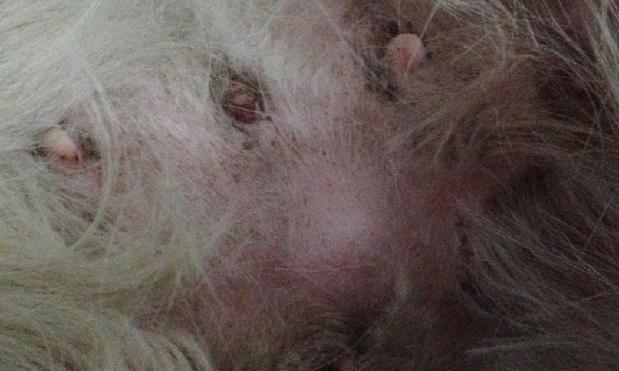I. Definition of umbilical hernia: It is caused by the passage of abdominal contents through the umbilicus.
2. Pathophysiology of umbilical hernia:
Many umbilical hernias are congenital and are caused by poor embryonic development. During the fetal period, the umbilical vein, vitelline duct and allantoic stalk pass through the umbilical foramen, but will close at birth, leaving a navel scar.
3. Causes of umbilical hernia
1. When the bitch gave birth naturally, due to no one to take care of it, when the bitch bit the umbilical cord for the puppies, the umbilical hole was too large due to excessive pulling.
2. During artificial birth, the umbilical cord of the puppy is too short, and the ligation point is too close to the abdominal wall. After the umbilical cord naturally dries and falls off, the umbilical hole is too large.
3. Before the umbilical cord is completely dry and falls off naturally, puppies bite and pull each other, which can also cause umbilical hernia.
4. Certain breeds of dogs are genetically predisposed because of body size.
5. Some external factors, such as trauma, injury, etc., can cause umbilical hernia to occur in the umbilicus.
IV. Clinical manifestations
Umbilical hernia is hereditary in some breeds of dogs, such as Pekingese.
V. Physical examination
Umbilical hernias usually appear as a soft mass at the umbilicus in the abdomen.
Six. Diagnosis
X-rays are not suitable for detecting small umbilical hernias, and B-ultrasound is suitable for determining the nature of the content.
Dog with umbilical hernia, rescued stray dog is auspicious

Auspicious abdominal photos of umbilical hernia dogs, obvious protrusions and masses can be seen.
Another dog with umbilical hernia had a protrusion at the umbilicus, the contents could not be returned to the abdominal cavity, and the hernia hole could not be touched.
Normal umbilicus, relatively smooth, only a healed scar on the belly button, the picture shows the teddy dot
The dog with umbilical hernia, the rescued white teddy, can see an obvious umbilical hole in the umbilicus. The existence of the umbilical hole can be clearly felt when palpated, and the content can be contained in the abdominal cavity.
Seven, treatment
For the treatment of umbilical hernia in dogs, some umbilical hernias in juvenile dogs can heal by themselves, and self-healing occurs at the latest at 6 months of age.
Eight, surgical methods
After surgical skin preparation and disinfection, a straight-line incision is made in the middle of the umbilical hernia, and the skin is incised to reveal the contents of the hernia hole, usually falciform fat, omentum or hernia hole, surrounding fat and connective tissue.
Rescue teddy dog umbilical hernia operation, the contents of hernia sac are sickle-shaped fat.
However, if it is difficult for the hernia contents to be absorbed into the abdominal cavity, the hernia hole can be enlarged and cut open in the abdominal wall until the hernia contents are completely incorporated into the abdominal cavity.
